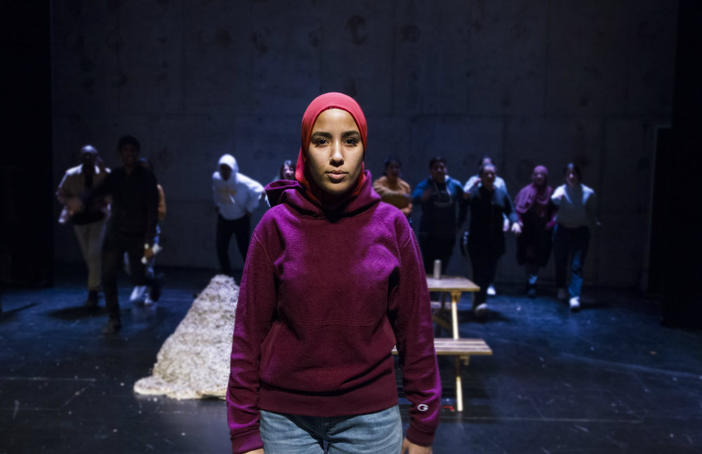Blog Post
There is strength in having these stories exchanged internationally
Viktoria Nguema from the Swedish Arts Council talks about their Creative Places programme and its roots in Creative People and Places

Viktoria Nguema from the Swedish Arts Council spoke at our People Place Power conference - here she tells the story of the Swedish Creative Places programme
It is a beautiful feeling when one realises that places who at first glance seem to have little in common, share similar stories. The Swedish place-based programme funded by the Swedish Arts Council, Creative Places, highlights those similarities and reminds us of the shared challenges but also possibilities with its English predecessor.
My name is Viktoria Nguema and I'm a programme officer for the Swedish CPP-initiative. After several visits these past three years to learn more about CPP in the process of creating and developing our own programme, I was invited to this year’s conference to participate in an international panel about people, place and power on a global scale. Together with Nicki Locke, British Council and former project manager for the CPP-project East Durham Creates, and Chrissie Tiller, writer and adviser for the CPP programme, I was given the opportunity to reflect on some of the similarities we share as well as our differences.
Creative Places is a place-based programme that funds local projects with the aim of making more people engaged with the arts. As one of the strategic investments by our constituent, the Swedish government, the Swedish Arts Council is initially distributing 100 million SEK (approximately £8.65m) during 2016-2018. Currently there are 23 creative places around Sweden.
Similarly, the projects are run by a consortium consisting of at least three organisations. As in CPP, one must be a local organisation and one must be a cultural organisation while other partners may be non-arts organisations. The projects should carry out activities based on the needs and interests of the local community and the residents ought to be included on all levels of the project, as project managers, artists as well as audiences. The biggest difference is the size of the projects which reflects the differences in funding, as the Swedish projects might cover smaller districts rather than entire cities.
“In this increasingly modern and globalised world, it was said that place would cease to matter to individuals. Yet, here we are, sitting and talking about the importance of place”, someone in the audience said during the panel. And perhaps that has been the missing key for a long time.
The initiatives from the English and Swedish Arts Councils demonstrate that the arts is struggling with similar issues in several places around the world – but the spirit, the enthusiasm and the vigor found within the projects also demonstrate that people have a strong desire to take part and shape the arts. It is to me becoming increasingly clear that low engagement with the arts, as measured by us Arts Councils, is not the same as not being creative or interested in arts and culture.
Another thing that struck me is how common the stories from the English and Swedish places are. The stories, naturally, have also shaped many of the activities in the projects and without having that
intention originally, these projects are to me an interesting snapshot of the state of our countries today. I believe that the place-based programmes have created a much-needed platform for these stories to be
heard and acknowledged locally as well as nationally. During the panel, it became clear that there is strength in having these stories exchanged internationally as well.
It makes me proud to be able to witness first-hand the current global movement of communities taking part of the arts. Similar initiatives or approaches to locally relevant and driven art are taking place in countries such as Kenya and Colombia. It is becoming more and more obvious that change within the arts sector cannot be done without having a conversation with the people who are not engaging today and not having a conversation about them. But seeing the drive and power in the communities in CPP and CP, the future looks bright.
To hear the stories from the Swedish creative places, please visit www.youtube.com/statenskulturrad
For more information about Creative places, please visit www.kulturradet.se/kreativa-platser
Image: Concrete stories located in Norsborg, Botkyrka. Photo: Fernando Illezca







